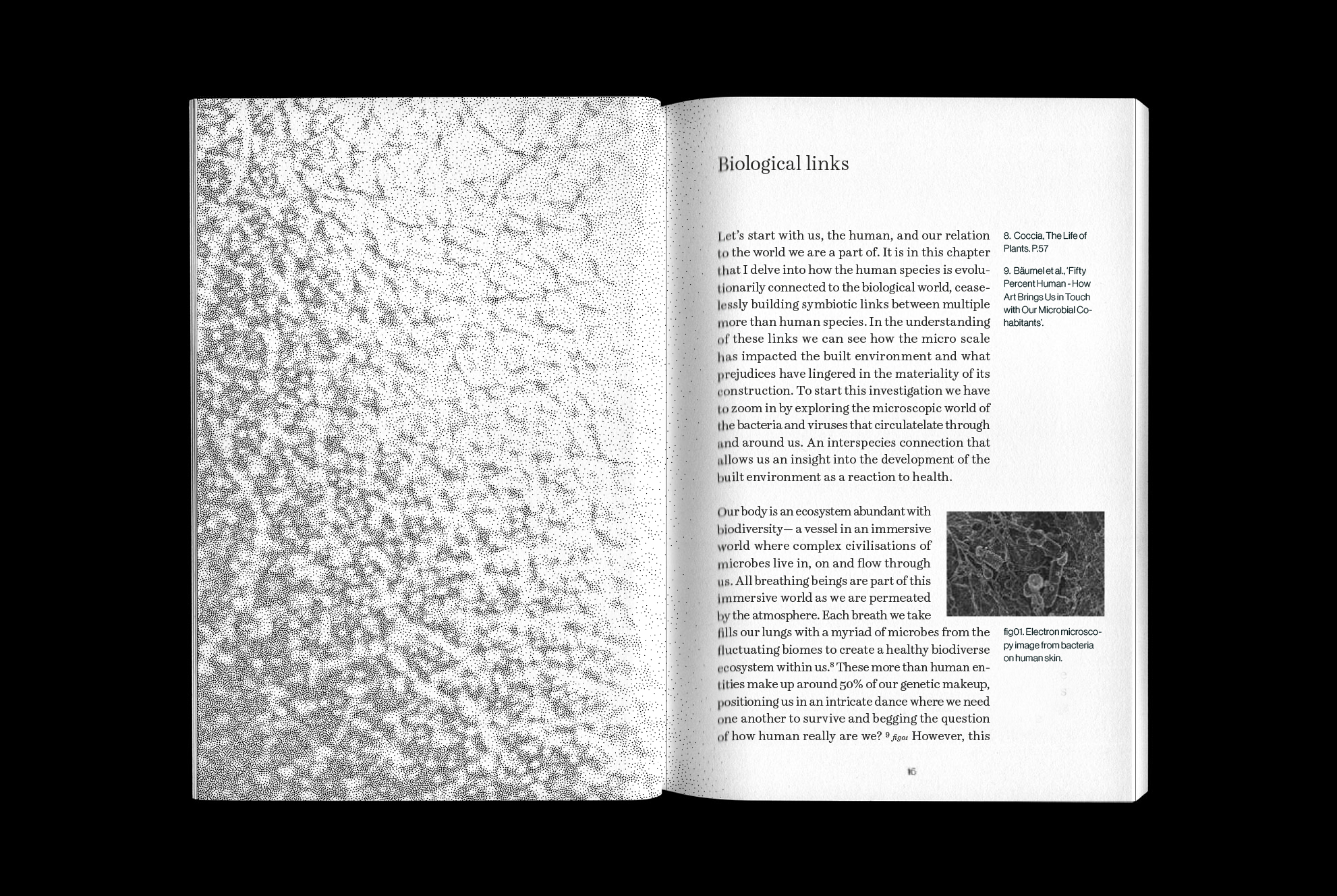Shimmering Architecture: The construction of a biome ventures into the origins of an anthropocentric prejudice within the modern interior that has plagued design professions for years. The more time I spent inside the walls of modern interiors, the more I recognised how similar these spaces were. A far reaching and all consuming aesthetic of purity that transcends scales and cultures.
Like a pearl forming around a grain of sand, this species' severance has been growing in modern society for a long time. Architecture and design have reflected this intolerance towards the more-than-human in the almost bald spaces we live in, as if an anthropocentric ideology were built into their concrete foundations. In these aseptic voids nature is severed and designated to the other side of the window. By unwrapping a culture’s desire for purity gives us an indication into how the architecture and design we surround ourselves with has severed the human from more-than-human beings that cohabit this world with us.
So it is within our homes, offices and schools that this writing falls, exploring these spaces as an ecosystem where multiple biological links between different scales of beings can show us a biome of multi-species cohabitation if we look in the right places. The research asks how the built environment can transcend its anthropocentric origins and become a landscape to re-link the damaged relationships between humans and more-than-humans alike.
So it is within our homes, offices and schools that this writing falls, exploring these spaces as an ecosystem where multiple biological links between different scales of beings can show us a biome of multi-species cohabitation if we look in the right places. The research asks how the built environment can transcend its anthropocentric origins and become a landscape to re-link the damaged relationships between humans and more-than-humans alike.
Research contributors
Rob Dunn
Julia Rijssenbeek
Angelo Renna
Meredith Root-Bernstein
References
1) Never home alone - Rob Dunn - Published Nov 2018
2) Evolution of the indoor biome - NESCent Working Group on the Evolutionary Biology of the Built Environment - Published April 2015
3) Encyclopedia of the World’s Biomes - Michael Goldstein, Dominick DellaSala - Published Jun 2020




